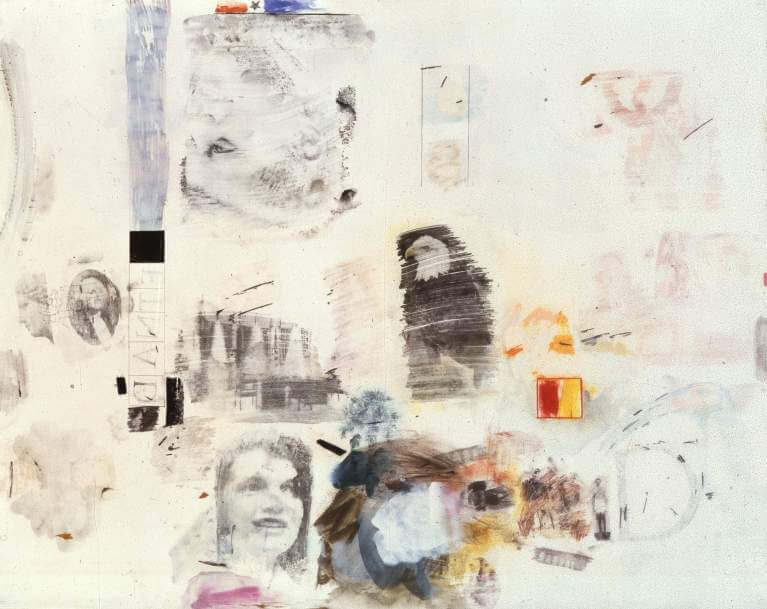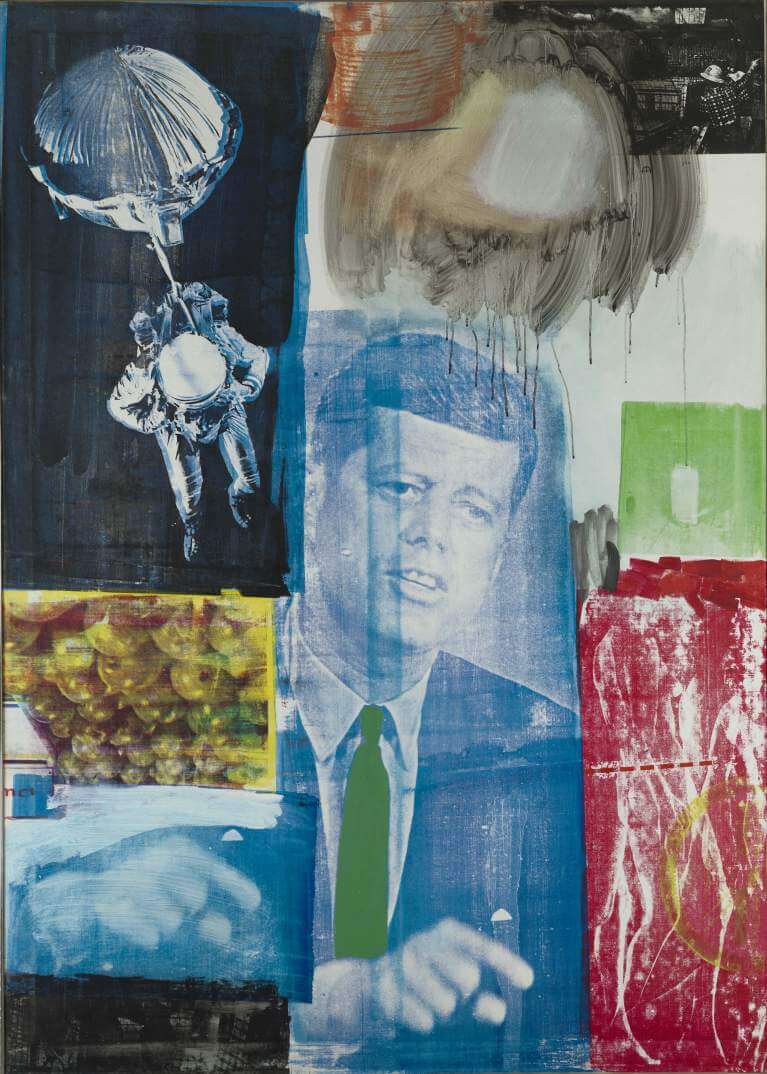
Retroactive I, 1963
Retroactive I
Retroactive I (1963) belongs to the series of silkscreen paintings that Rauschenberg made between 1962 and 1964. His subject matter and commercial means of reproduction for these works led critics to identify him with Pop art. Unlike the one-to-one ratio he could achieve in the transfer drawings, the mechanically produced screens allowed him to transcribe his own photographs and images taken from the popular press onto a larger scale.
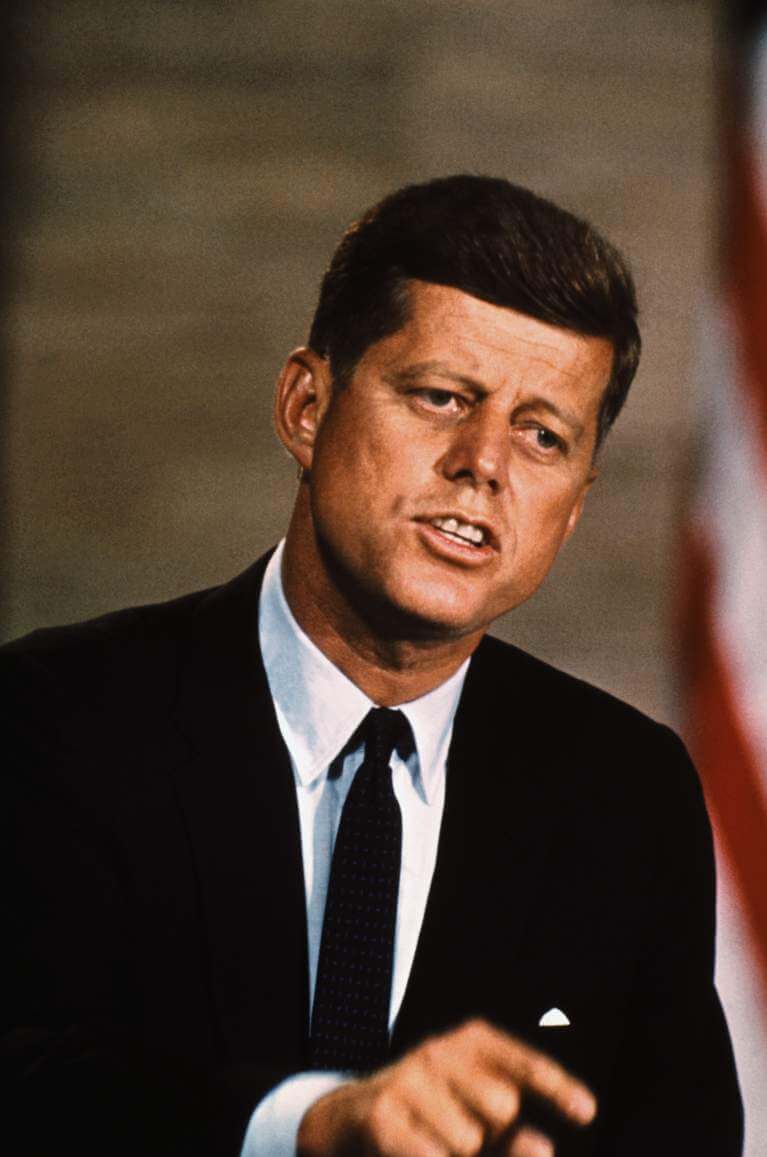
Senator John F. Kennedy during the second presidential debate, 1960. Photo: Bettmann/Bettmann Collection/Getty Images
The dominant image in this painting is John F. Kennedy, then Senator from Massachusetts, shown during the second televised presidential debate. Rauschenberg was in a quandary as to whether or not to use the image, because he had ordered the screen just prior to the thirty-fifth U.S. President’s assassination. Kennedy's social activism made him a hero to Rauschenberg and ultimately the artist chose to use the screen in this painting, as well as several others in the silkscreen painting series, including Retroactive II, Axle, and Buffalo II (all from 1964). Rauschenberg told art critic Calvin Tomkins, “Kennedy . . . reestablished what a President is supposed to be—somebody special. . . . One of the things that was so shocking about his death was that it was so believable; it wasn’t out of scale with the strength and abruptness of all the things he’d done in office.”
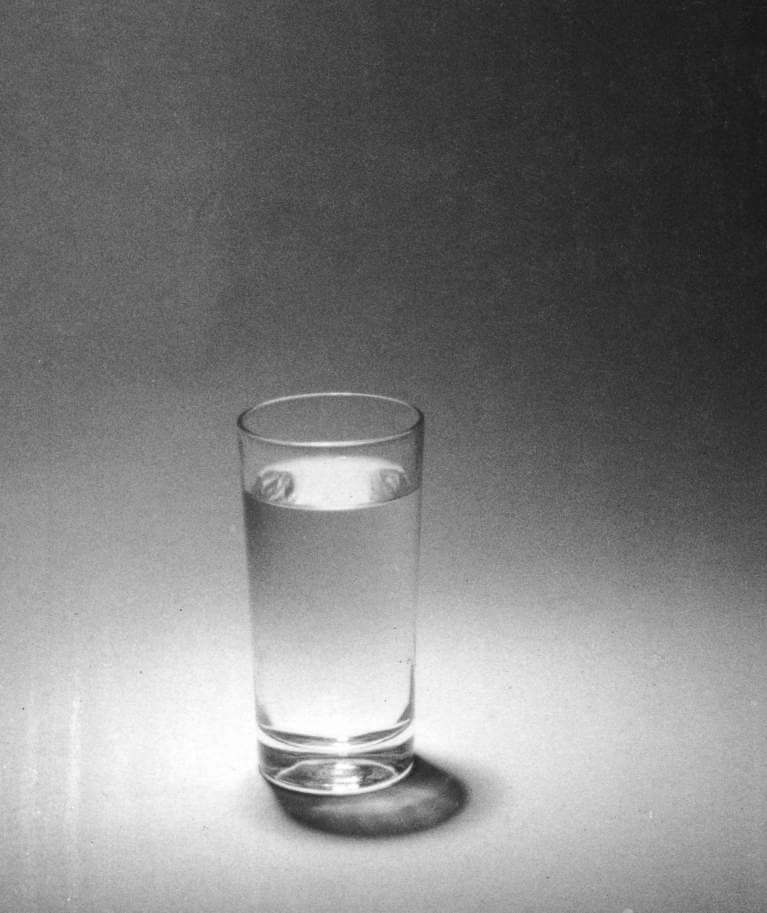
Rauschenberg, Untitled [glass of water], ca. 1962
The image of a glass of water appears throughout the silkscreen painting series, and it is based on a Polaroid photo taken by the artist ca. 1962. Commenting on the green glass of water in his silkscreen painting, Persimmon (1964), Rauschenberg said, “I was silkscreening a glass of water, and I put it over green and that whole painting had to change to destroy the look of poison, which is just simply an association that one has with a glass of green.”
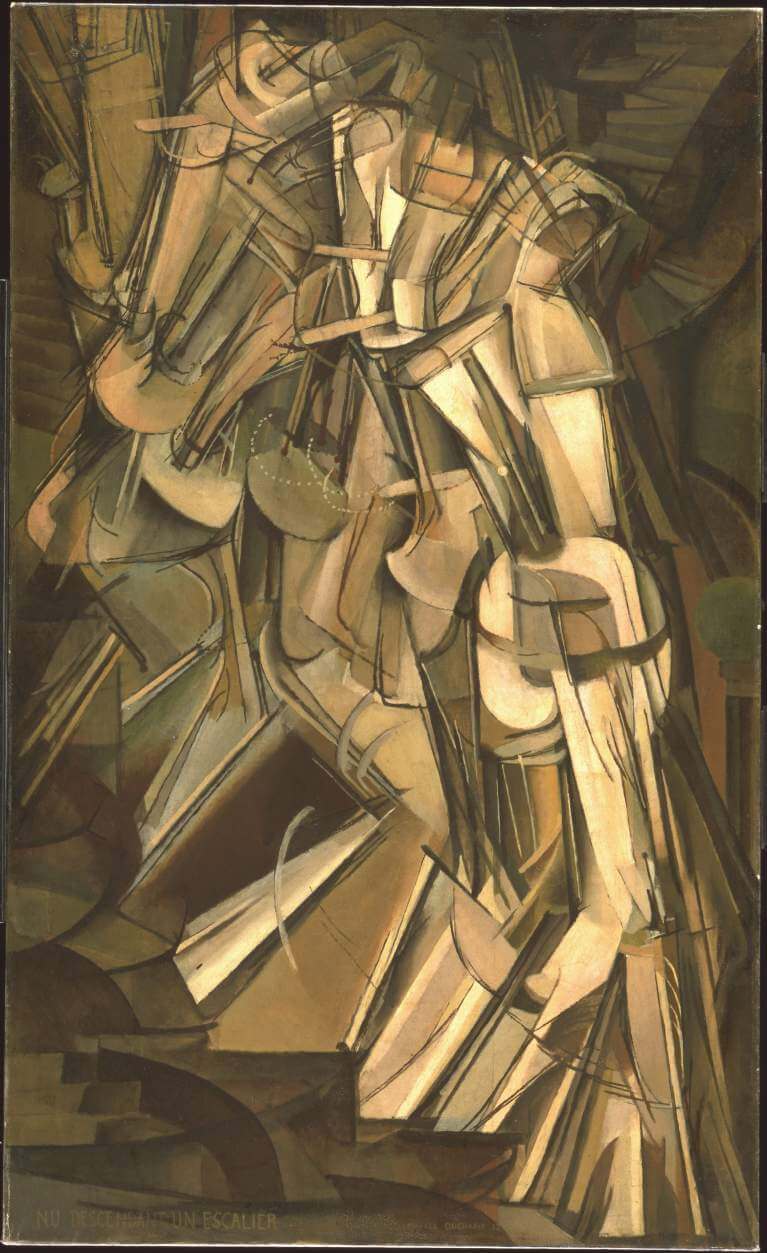
Marcel Duchamp
Nude Descending a Staircase (No. 2), 1912
Oil on canvas
57 7/8 x 35 1/8 inches
Philadelphia Museum of Art, The Louise and Walter Arensberg Collection, 1950
Art: © Succession Marcel Duchamp/ADAGP, Paris/Artists Rights Society (ARS), New York
Photo: Philadelphia Museum of Art/Art Resource, NY
In late fall 1958, Rauschenberg visited the Philadelphia Museum of Art with Jasper Johns to view the works on permanent display by Marcel Duchamp in the Louise and Walter Arensberg Collection. Duchamp’s painting of Nude Descending a Staircase (No. 2) (1912) was the likely inspiration behind the time-lapse photograph by Gjon Mili that appeared in the October 26, 1962, issue of Life magazine and that served as a source for Rauschenberg’s silkscreen.
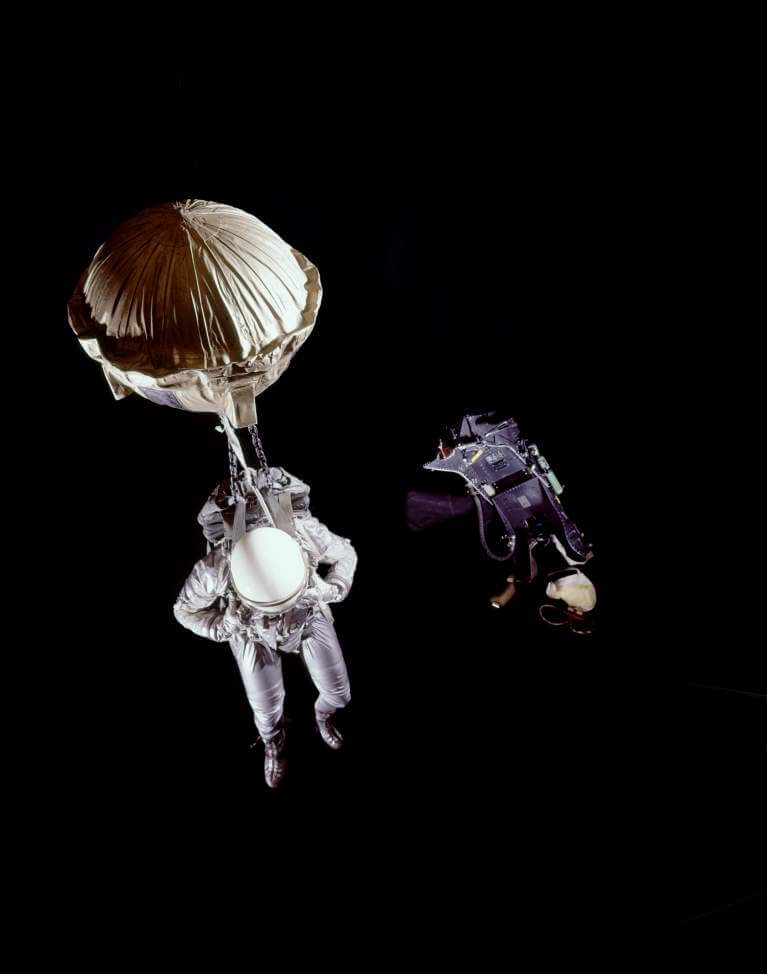
View of NASA (National Aeronautics and Space Administration) space suit equipped with a combination of a parachute and balloon to be used if an astronaut ejected out of Gemini space capsule, 1963. Photo: Ralph Morse/Time & Life Pictures/Getty Images
Rauschenberg had a longstanding fascination with flight and outer space. During the 1960s he frequently expressed admiration for astronauts by featuring them in his art. The source photograph for the astronauts in this silkscreen is from a NASA photograph reproduced in Life magazine, September 27, 1963.
Election, 1960
Rauschenberg sent the transfer drawing, Election (1960), as a gift to President and Mrs. Kennedy in April 1961. It was auctioned as part of Jacqueline Kennedy Onassis’s estate at Sotheby’s, New York, in 1996. In a letter to the President and First Lady, Rauschenberg wrote: “My concern with the election, primarily your becoming our next president, interrupted a 2 ½ year project illustrating Dante’s Inferno. That fact + a need to celebrate your victory in my own medium is the subject.”
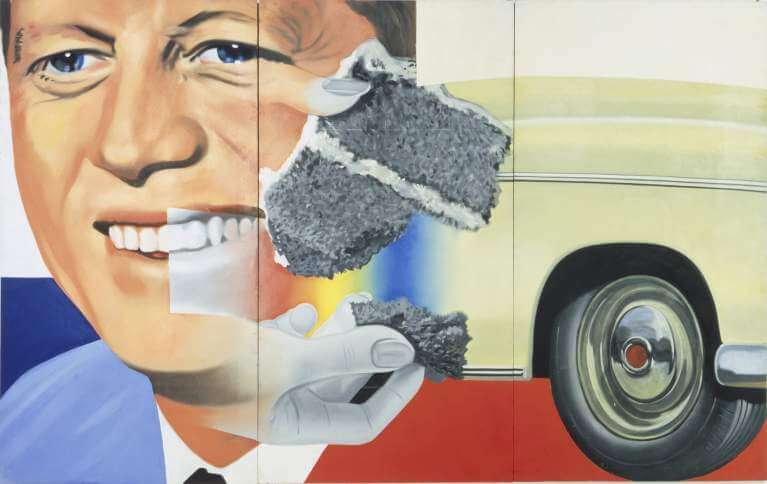
James Rosenquist
President Elect, 1960–61
Oil on Masonite
89 3/4 x 144 inches
Musée National d’Art Moderne, Centre Georges Pompidou, Paris
Art: © James Rosenquist/Licensed by VAGA, New York, NY
Photo: CNACC/MNAM/Dist. RMN-Grand Palais/Art Resource, NY
As the first presidential race to fully play out on television, the painter James Rosenquist, like Rauschenberg, understood the importance of the media to the Kennedy presidency; the packaging of JFK closely resembled a full-fledged advertising campaign. Using his characteristic style inspired by his work as a billboard painter, Rosenquist’s President Elect (1960–61) shows an image from a Kennedy campaign poster side by side with advertising images of cake mix and an all-American car.
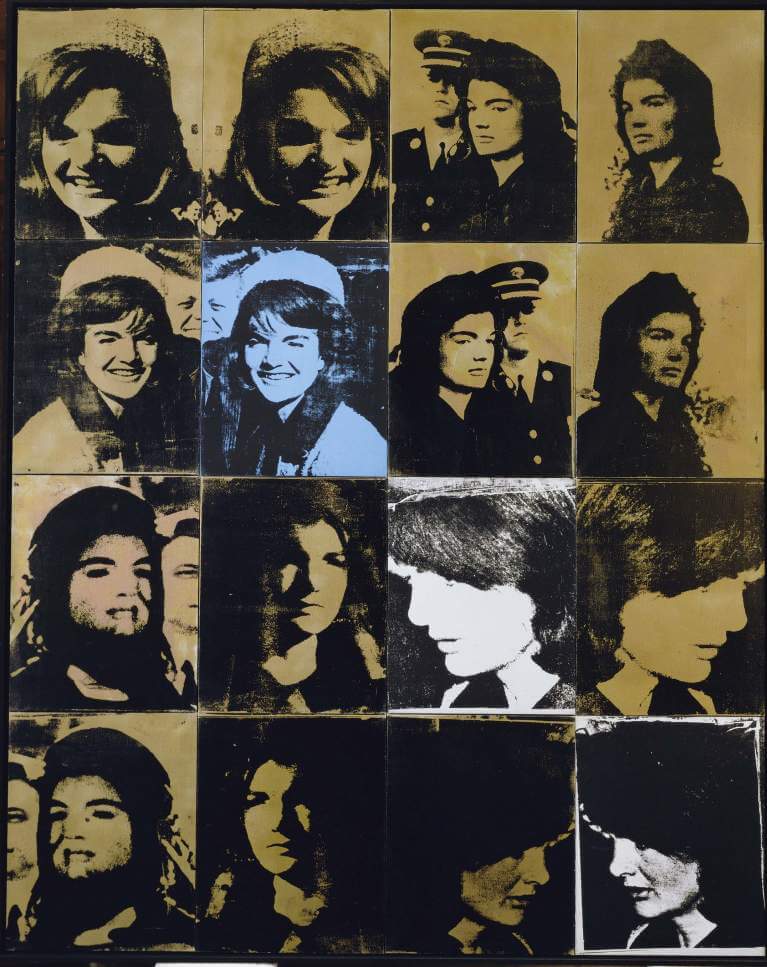
Andy Warhol
The Week That Was I, 1964
Acrylic, spray paint, and silkscreen ink on canvas
80 x 64 inches
Collection of Ronnie Heyman, New York
Art: © 2013 The Andy Warhol Foundation for the Visual Arts, Inc./Artists Rights Society (ARS), New York
The dynamism of the Kennedy presidency captured the imagination of many of Rauschenberg’s contemporaries. Also using silkscreen for making fine (rather than commercial) art, Andy Warhol in The Week That Was I (1964) captured the media response to the Kennedy assassination by combining images of the First Lady directly before and after the event. As Warhol said, “What bothered me was the way the television and radio were programming everyone to feel so sad.”

